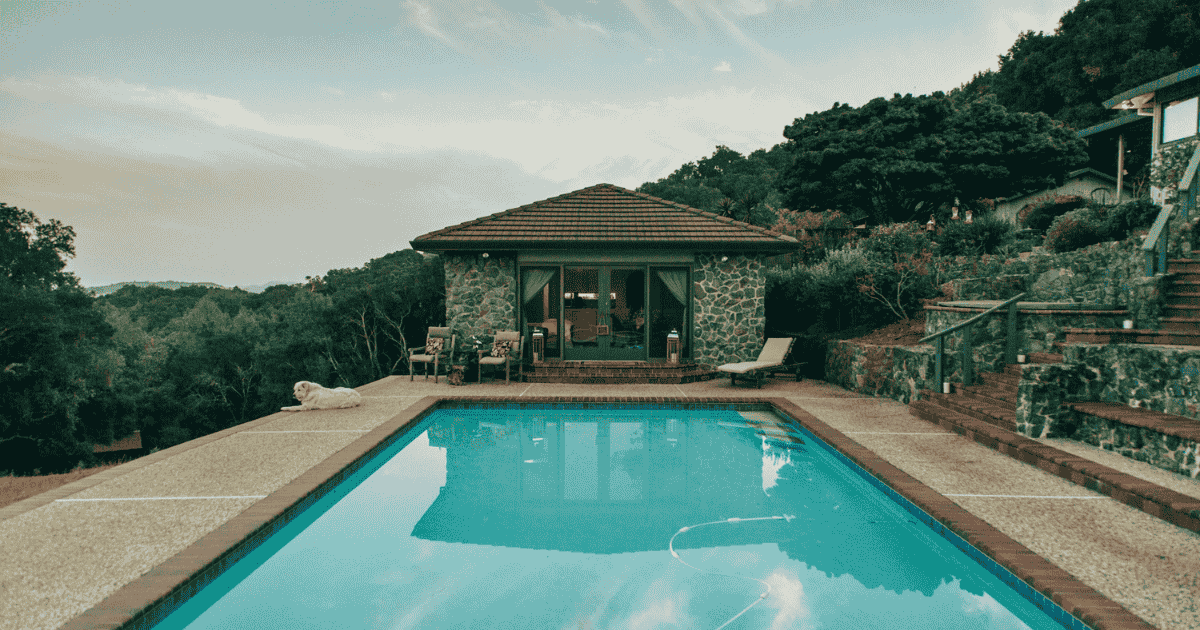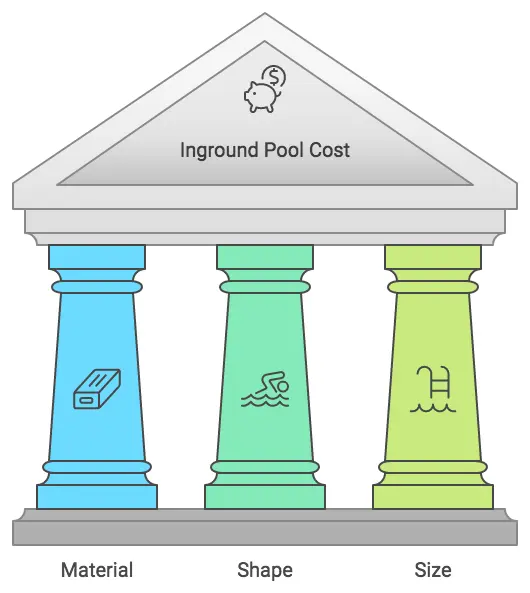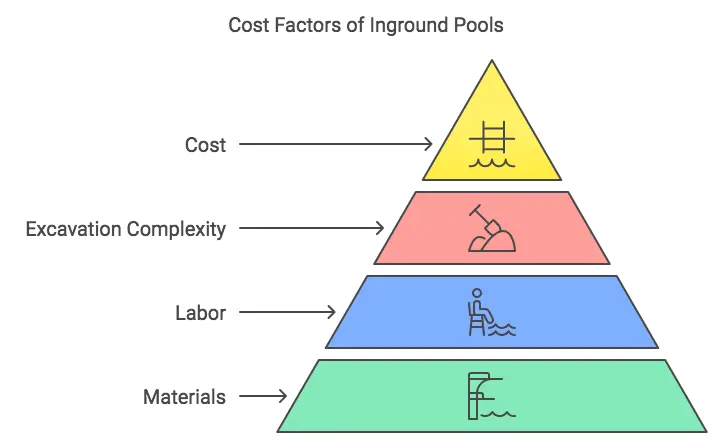CALL US NOW!
+91-213-666-0027
CALL US NOW!
+91-213-666-0027
How Much Does An Inground Pool Costs In 2024
- Home
- How Much Does An Inground Pool Costs In 2024

Diving Into the World of Inground Pools
The cost of an inground pool ranges from $28,000 to $55,000, averaging around $35,000. Pricing varies based on the pool’s material, shape, and size, typically falling between $50 to $125 per square foot.

No wonder that more and more homeowners and real estate investors are considering inground pool installations. But before you take the plunge, it’s essential to understand the various factors that affect inground pool costs. This blog post will guide you through the ins and outs of inground pool expenses, helping you make informed decisions and plan your dream pool project.
Table of Contents
Factors Affecting Inground Pool Costs
Size and Depth
When it comes to inground pools, size does matter. The larger and deeper your pool, the higher the cost. A bigger pool requires more materials, more labor, and potentially more complex excavation. For example, a small 12×24 foot pool might be more affordable, but if you’re dreaming of a luxurious 20×40 foot pool, be prepared for the costs to rise significantly. Consider your space and needs carefully when deciding on the size and depth of your pool.
Material Selection
The choice of materials plays a crucial role in determining the overall cost of your inground pool. Here are some common options:
- Concrete: Known for its durability and customization options, concrete pools are often the most expensive. They can be shaped to fit any design and offer a long lifespan. However, they require regular maintenance and resurfacing, which can add to the overall cost.
- Fiberglass: These pools come pre-fabricated and are quicker to install. They have a smooth surface that’s easy to clean, making them a popular choice. While fiberglass pools have a higher upfront cost compared to vinyl, they tend to require less maintenance over time.
- Vinyl: Vinyl liner pools are generally the most budget-friendly option. They offer flexibility in design and are relatively easy to install. However, liners need to be replaced every 7-10 years, which adds to the long-term cost.
Additional Features
Adding extra features to your inground pool can enhance its functionality and aesthetics, but they also increase the overall cost. Here are a few popular options:
- Lighting: Installing pool lighting can create a magical ambiance for evening swims. LED lights are energy-efficient and long-lasting, but the installation can add to your expenses.
- Heating: A heated pool allows you to enjoy swimming year-round, even in cooler climates. However, the cost of installing a heating system and the ongoing energy expenses should be considered.
- Landscaping: Surrounding your pool with beautiful landscaping can transform your backyard into a paradise. Factor in the cost of plants, hardscaping, and any additional features like waterfalls or fountains.
Average Inground Pool Costs
National and Regional Averages
The cost of an inground pool can vary significantly based on your location. On average, homeowners in the United States can expect to spend between $35,000 and $65,000 for a basic inground pool. However, prices can range from $20,000 to over $100,000 depending on factors like size, materials, and additional features.

For example, in regions with a higher cost of living, such as California or New York, the prices may be on the higher end of the spectrum. Meanwhile, in areas with a lower cost of living, like the Midwest, you might find more affordable options.
Breakdown by Pool Size and Materials
To give you a clearer picture, here’s a rough breakdown of costs based on pool size and materials:
- Small Vinyl Pool (12×24 feet): $20,000 – $35,000
- Medium Fiberglass Pool (16×32 feet): $45,000 – $60,000
- Large Concrete Pool (20×40 feet): $70,000 – $100,000+
Keep in mind that these estimates are just starting points. Customizations, local labor rates, and other factors can influence the final price.
Planning and Budgeting Tips
Getting Multiple Quotes
One of the best ways to ensure you’re getting a fair price for your inground pool is to get multiple quotes from reputable contractors. This allows you to compare prices, services, and timelines. Don’t be afraid to ask for references and read reviews to ensure you’re choosing a reliable professional.
Ongoing Maintenance Costs
While the initial installation cost is significant, it’s essential to factor in ongoing maintenance expenses. Regular cleaning, chemical treatments, and occasional repairs are part of pool ownership. Budgeting for these costs from the beginning can help you avoid surprises down the road.
Set a Realistic Budget
Determine how much you’re willing to spend on your inground pool and stick to your budget. Remember to account for potential additional costs, such as permits, landscaping, and insurance. Having a clear budget will help you make informed decisions and avoid overspending.
Cost-Saving Strategies
Opting for a Smaller Pool
If you’re working with a limited budget, consider opting for a smaller pool. While a large pool may be tempting, a smaller pool can still provide plenty of enjoyment without breaking the bank or cleaning issues. Plus, it requires less maintenance and lower heating costs.
Choosing More Affordable Materials
While concrete pools offer durability and customization, they come with a higher price tag. If you’re looking to save money, consider fiberglass or vinyl options. These materials can still provide a great swimming experience at a more affordable cost.
DIY Landscaping
Instead of hiring a professional landscaper, you can save money by tackling some of the landscaping tasks yourself. Planting shrubs, laying pavers, and adding decorative elements can be done as a DIY project, reducing your overall expenses.
The Value of Inground Pools
Increase in Property Value
One of the significant benefits of installing an inground pool is the potential increase in property value. A well-designed and maintained pool can make your home more attractive to potential buyers. Many homebuyers view a pool as a desirable feature, especially in warm climates.
Lifestyle Improvements
Beyond the financial benefits, having an inground pool can significantly enhance your lifestyle. It provides a convenient and enjoyable way to exercise, relax, and entertain guests. Imagine hosting poolside parties, family gatherings, and creating lasting memories with loved ones.
Conclusion
Inground pools offer a fantastic addition to any home, providing both recreational and aesthetic benefits. By understanding the factors that affect costs, planning carefully, and exploring cost-saving strategies, you can make your dream pool a reality. Remember, the investment in an inground pool goes beyond the initial expense—it can enhance your property value and quality of life.
Frequently Asked Questions (FAQs)
How much does an inground pool cost on average?
On average, an inground pool costs between $35,000 and $100,000. The cost varies by type: concrete pools ($50,000-$100,000), fiberglass pools ($45,000-$85,000), and vinyl-lined pools ($35,000-$65,000). Factors such as materials, size, location, and additional features influence the final price.
What additional costs should I consider when installing an inground pool?
Additional costs may include landscaping ($2,000-$10,000), fencing ($1,500-$5,000), pool covers ($600-$2,200), lighting ($700-$1,500), and heating systems ($1,500-$5,000). Don’t forget to factor in maintenance costs and potential increases in utility bills and property taxes.
How much does it cost to maintain an inground pool annually?
Annual maintenance costs range from $1,200 to $1,800. This includes chemicals, regular cleaning, equipment maintenance, and minor repairs. Running pool pumps and heaters can add $300-$800 to your energy costs per year.
Are there ways to reduce the cost of installing an inground pool?
To save on costs, consider opting for a smaller pool, a simple design, or vinyl lining instead of concrete. Timing your project during off-peak seasons and seeking multiple bids can also help reduce expenses.
How does an inground pool affect property value and insurance?
An inground pool can increase property value by 5-8%. However, it may also lead to higher property taxes and insurance premiums. Expect an increase of $50-$75 per year for homeowner’s insurance, and some insurers may require additional liability coverage.
